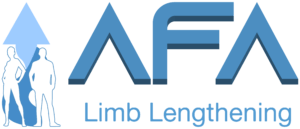肢体延长是一种外科手术,涉及逐渐延长患者的骨骼以增加身高。 此过程涉及几个不同的阶段,这些阶段对于确保成功的结果至关重要。 了解肢体延长的不同阶段对于参与该手术的患者和医疗专业人员都至关重要。 在本文中,我们将讨论肢体延长的四个阶段:手术阶段、潜伏期、牵引阶段和巩固阶段。 通过提供每个阶段的全面概述,我们希望增强您对此手术的了解,并帮助您为成功的肢体延长体验做好准备。
手术阶段
肢体延长手术阶段是手术的初始阶段。 在手术过程中,外科医生切割骨头以形成两个独立的骨段。 截骨的外科手术称为截骨术。 在肢体延长手术中,通过截骨术切开骨头后,外科医生将矫形延长装置应用于骨头。 这些设备可以是内部设备,也可以是外部设备。 内部装置,例如 Precice 钉,直接插入骨头中。 外部装置(例如单轨或圆形框架)保留在体外,并通过销钉或电线连接到骨骼上。 手术阶段需要仔细注意细节。 为了确保肢体延长手术的安全和成功,由熟练且经验丰富的外科医生进行手术阶段至关重要。
潜伏期
肢体延长潜伏期也称为无干扰间隔,它允许骨骼愈合并为延长过程做好准备。 潜伏期没有延长,等待愈伤组织形成开始。 通常需要 5-10 天。潜伏期的持续时间可能会有所不同,具体取决于各种因素,例如年龄、整体健康状况以及要延长的特定骨骼。 确定适当的潜伏期持续时间很重要,以避免过早固结或骨不连等并发症。
延长(分散)阶段
在延长期间,骨段逐渐彼此分离。 骨段的缓慢分离会刺激身体产生新骨(愈伤组织)。 牵引速度通常约为每天 1 毫米,但可能会因延长的骨骼而异。 牵引的速度可能需要根据 X 射线上再生骨(愈伤组织)的外观进行调整,并且患者需要每月看医生几次以确保骨骼以适当的速度延长。 每两周定期进行一次 X 光检查对于评估延长的质量并确保不会出现并发症是必要的。 当骨骼开始延长时,骨骼周围的软组织也需要延长。 软组织的延长能力不是很快,因此这个过程会导致软组织紧张和不适。 因此,在牵引阶段,每周至少需要进行五次剧烈的物理治疗。当达到目标长度时,停止延长并开始巩固阶段,其中新骨组织变得更致密和硬化。
巩固阶段
截骨间隙内新形成的骨组织巩固并变硬的阶段称为巩固期。 当骨头被延长到所需的长度后,新骨头需要时间来巩固和强化。 需要定期进行 X 光检查以评估巩固的进展。 根据个人参数,通常在延长阶段结束后 4 至 8 周内允许完全负重。 在巩固阶段还应继续进行物理治疗,重点是肌肉强化、再教育和肢体本体感觉的改善。 当新骨组织完全巩固并能在任何活动中承受体重时,可以通过手术将髓内钉从骨中取出。 这个时期通常在手术后持续1-1.5年。

